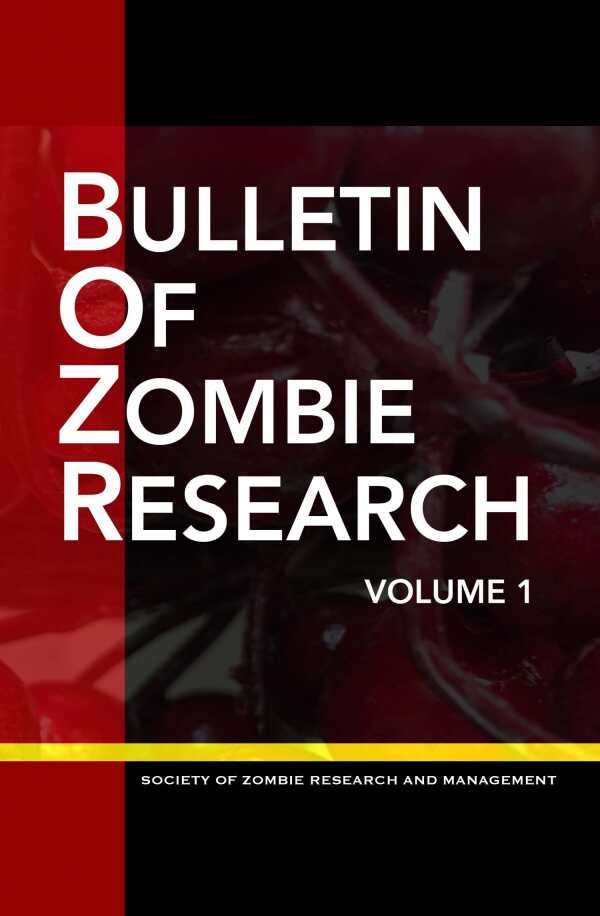Bulletin of ZOMBIE Research
Volume 1
- 2014 INDIES Winner
- Bronze, Horror (Adult Fiction)
- 2014 INDIES Finalist
- Finalist, Humor (Adult Fiction)
- 2014 INDIES Finalist
- Finalist, Science Fiction (Adult Fiction)
This scientist’s rigorous research into ZOMBIE outbreaks is dead-on.
With most zombie-related literature focusing on the headline-grabbing violence and devastation associated with the disease, Christy J. Leppanen’s exhaustively researched collection of scientific articles in Bulletin of ZOMBIE Research: Volume 1 is a welcome look at the causes and effects of Zooanthroponotic Occult MetaBiomimetic Infectious Encephalitis. Complete with extensive citations and meticulously collected data, this collection is certain to become a foundation for further research into these mysterious walking corpses.
The book is divided into eight articles that investigate a range of aspects of ZOMBI encephalitis and the recent rise in the number of cases globally. The first three articles look at the relationship between zombies and varieties of flora and fauna, including monarch butterflies and the common thistle, to establish how the disease affects and is affected by other species. The next two look at the effects of ZOMBI encephalitis on the human body through the study of cadavers, including links between hair loss and potential for infection. Article six looks at the condition of newborns from infected mothers, finding a correlation between disease-positive mothers and affected newborns.
The final two articles are truly astounding. In the penultimate, researchers discovered a potential life-extending treatment for sufferers of stage IV lung cancer using the ZOMBI encephalitis virus. Patients who were deliberately infected showed signs of increased resilience, leading to speculation about new types of treatments. The last article challenges the widely held belief that zombies have “no cognitive abilities or memories from their disease-free human origins” by studying vocalizations as a method of communication, finding that zombies “not only appear to produce, recognize, and respond to vocalizations, but may also exhibit a form of heightened emotion to some vocalizations compared with disease-free humans.” These astonishing findings may change everything we thought we knew about zombies.
What is astounding about this volume is the high level of scientific scrutiny that has gone into each article. The arguments are diligent and disciplined, staying far away from the sensationalism of other accounts of zombie-ism. Each piece includes thoroughly researched charts and graphs, laboratory images, and extensive descriptions of the researchers’ materials and methods. A bibliography follows each article and includes a fascinating collection of source material, including some that readers may already be familiar with, like Monarch Watch or publications from the United States National Office of ZOMBIE Research (USNOZR).
As this is a totally real scientific study, some sections may prove difficult to understand for readers unaccustomed to such rigorous approaches. The amount of data threatens to overwhelm the collection’s conclusions, though readers with scientific backgrounds will assuredly find the included facts to be helpful. Casual readers would certainly benefit from additional introductory information to help make this collection more accessible. However, this is a wonderfully written contribution to zombie literature, and is unique in a genre focused largely on the social aspect of the disease rather than the current science being done to understand it.
Reviewed by
Eric Anderson
Disclosure: This article is not an endorsement, but a review. The publisher of this book provided free copies of the book and paid a small fee to have their book reviewed by a professional reviewer. Foreword Reviews and Clarion Reviews make no guarantee that the publisher will receive a positive review. Foreword Magazine, Inc. is disclosing this in accordance with the Federal Trade Commission’s 16 CFR, Part 255.

